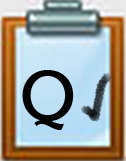Introduction
Moving along the problem-solving path, after you have decomposed the problem, it's time to analyze the data. In this Quest you will look at pattern recognition and how you look at the data and draw conclusions by noticing similarities and differences.
There are patterns in almost everything if you look closely. There are patterns in math, science, art, nature, literature. music, etc. If there is a problem, finding the pattern is often the most efficient way to solve it.
Do you know who Alan Turing is? He and Gordon Welchman along with others helped crack Hitler's Enigma Code in World War II. It is believed that it helped shorten the war by a couple of years. He and the rest of the team looked at patterns to solve the Code. Watch this short video as a class to learn how they cracked the code.
As you saw in the video, being able to crack the code helped save many lives by shortening the war. Patterns can be very important.
I Can Statement
- recognize patterns or trends in data.
Key Vocabulary
Enigma Machine: The Enigma machines are a series of electro-mechanical rotor cipher machines, mainly developed and used in the early- to mid-20th century to protect commercial, diplomatic and military communication. (German code machine broken by the Allies and used to predict what the Germans would do.)
Pattern Recognition: Pattern recognition is the observation of patterns and trends in data and drawing conclusions from it.
Play the Vocabulary Game below to practice the Key Vocabulary.
Vocabulary Game
You can change the Quiz mode to Match, Test, Learn, Flash Cards, Spell using the selection list at the bottom right of the activity that says "Choose a Study Mode." Direct Link
Steps
1. Patterns can be found in many different forms. Complete the following steps by finding a solution to each pattern. Work with a partner on these if possible.
2. Look at the five circles below. The fifth color is not white, what color do you think is the next in the series? Reflect on your answer and share it with someone else, and explain your reasoning.

3. Word Ladder - Complete the word ladder by changing one letter from the previous word to get a new word (hints are provided). Start with the word Dart and discover the four words needed to reach Code at the top of the ladder.
 Here are the clues. Remember you start at the bottom of the ladder with Dart and end with Code.
Here are the clues. Remember you start at the bottom of the ladder with Dart and end with Code.
Hints
1. To challenge
2. Addition
3. Horse
4. The number that appears the most
4. Use this Word Ladder and Lighthouse Exercise document to record your word ladder so that you can share the results with your teacher.
5. Next, use this Lighthouse Worksheet to crack the code to light all four lighthouses.
6. Using the Google Document or a Word Document you used for the Word Ladder, enter the four numbers you came up with to light the lighthouse and share it with your teacher.
7. The examples above are very simple patterns to recognize. Watch this video as a class to see the parallels between patterns and computer coding.
8. Now that you understand how important patterns are, you will need to revisit your complex problem and explain how patterns play a part in solving it.
9. Go to your Computational Thinking Document (from Q1), fill in Step three, and let your teacher know when you have completed them.
Completing This Quest
Follow your teacher's instructions for completing the pattern assignment. Then complete the steps for your complex problem and share with your teacher when it is completed.
Check off this Quest on the 21t4s roadmap
I have completed this Quest and I am ready to learn about Quest 4
Competencies & Standards
MITECS Michigan Integrated Technology Competencies for Students, and
5. Computational Thinker
a. Students formulate problem definitions suited for technology-assisted methods such as data analysis, abstract models and algorithmic thinking in exploring and finding solutions
b. Students collect data or identify relevant data sets, use digital tools to analyze them, and represent data in various ways to facilitate problem-solving and decision-making
c. Students break problems into component parts, extract key information, and develop descriptive models to understand complex systems or facilitate problem-solving
Websites and Documents
Websites
Videos from Outside Sources
21t4s Videos
21t4s Documents & Quizzes




